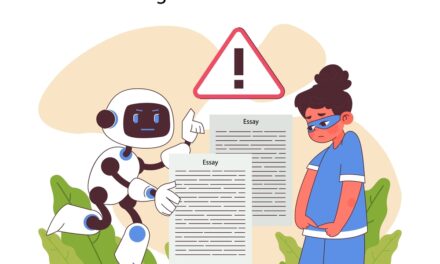Data encryption is a basic principle of cybersecurity. If there are questions, this prevents others from connecting the dots. Given that cyber attacks are on the rise, encryption is critical to keeping our personal, financial, and business data from prying eyes.
A cyber security course will teach how encryption functions, why it is important in terms of cybersecurity, and how to implement it. In this article, we will discuss data encryption, its key types, benefits, and real-world applications.
What is Data Encryption?
Data encryption is the process of converting readable data into an unreadable format using cryptographic algorithms. Only authorized users with the proper decryption key can restore the data to its original format.
Key Components of Encryption
- Plaintext – The data before it has been encrypted into an unreadable state.
- Ciphertext — The encrypted data that is unintelligible without a decryption key.
- Encryption Algorithm – A mathematical function that transforms plaintext to ciphertext.
- Encryption Key – A string used to cryptographically saturate or defecate the data.
Why is Data Encryption Important in Cybersecurity?
1. Protects Sensitive Information
- Safeguards personal data, financial records, and business information from cybercriminals.
- Prevents unauthorized access to sensitive communications.
2. Ensures Data Integrity
- Prevents data tampering by unauthorized parties.
- Verifies that transmitted data remains unchanged during transfer.
3. Strengthens Compliance and Legal Requirements
- Helps businesses comply with data protection laws, such as:
- General Data Protection Regulation (GDPR)
- Health Insurance Portability and Accountability Act (HIPAA)
- Payment Card Industry Data Security Standard (PCI DSS)
4. Prevents Data Breaches
- Encrypting stored and transmitted data reduces the risk of cyberattacks.
- Even if data is stolen, encryption makes it unreadable without the proper decryption key.
5. Enhances Trust and Security in Digital Transactions
- Enables secure online banking, e-commerce, and digital payments.
- Protects customer information from identity theft.
Types of Data Encryption
1. Symmetric Encryption
- Uses a single key for both encryption and decryption.
- Faster and more efficient but requires secure key management.
- Examples:
- Advanced Encryption Standard (AES)
- Data Encryption Standard (DES)
2. Asymmetric Encryption
- Uses a pair of keys:
- Public Key (for encryption)
- Private Key (for decryption)
- Commonly used in email security, digital signatures, and secure web browsing.
- Examples:
- Rivest-Shamir-Adleman (RSA)
- Elliptic Curve Cryptography (ECC)
3. Hashing
- Converts data into a fixed-length string (hash).
- Used for data integrity checks, password storage, and digital signatures.
- Examples:
- Secure Hash Algorithm (SHA-256)
- Message Digest Algorithm (MD5)
Applications of Data Encryption in Cybersecurity
1. Secure Communication
- Emails: Encryption ensures that emails remain private. (Example: Pretty Good Privacy – PGP)
- Messaging Apps: WhatsApp and Signal use end-to-end encryption to secure conversations.
2. Protecting Stored Data
- Hard Drives and Cloud Storage: Encrypting data prevents unauthorized access in case of theft or hacking.
- Database Security: Financial institutions encrypt customer data to protect against cyberattacks.
3. Secure Online Transactions
- E-commerce websites use encryption to protect payment details.
- SSL/TLS certificates ensure secure browsing and data exchange.
4. Password Protection and Authentication
- Websites use hashing techniques to store encrypted passwords securely.
- Multi-factor authentication (MFA) enhances security by adding extra verification steps.
5. Digital Signatures and Identity Verification
- Encryption verifies the authenticity of digital documents.
- Digital signatures prevent document tampering.
Challenges of Data Encryption
1. Performance Issues
- Strong encryption algorithms can slow down system performance.
- Organizations must balance security and efficiency.
2. Key Management Complexity
- Losing an encryption key can result in permanent data loss.
- Proper key management policies are essential.
3. Insider Threats
- Employees with access to encryption keys can misuse or leak data.
- Role-based access control (RBAC) minimizes risks.
4. Compatibility with Legacy Systems
- Older systems may not support modern encryption standards.
- Organizations must upgrade their infrastructure for better security.
How to Learn Data Encryption and Cybersecurity?
1. Enroll in a Cybersecurity Course
- Taking cyber security courses helps professionals learn encryption techniques.
- Covers key topics like encryption algorithms, cryptography, and data protection.
2. Get Certified in Cybersecurity
- Popular certifications include:
- Certified Information Systems Security Professional (CISSP)
- Certified Ethical Hacker (CEH)
- Certified Information Security Manager (CISM)
3. Gain Hands-on Experience
- Practice encryption techniques using tools like OpenSSL, VeraCrypt, and GnuPG.
- Participate in cybersecurity competitions and challenges.
4. Stay Updated on Encryption Trends
- Follow industry news on encryption advancements.
- Learn about emerging threats and new security solutions.
Career Opportunities in Cybersecurity and Encryption
1. Job Roles in Cybersecurity
- Cybersecurity Analyst
- Encryption Specialist
- Cryptographer
- Network Security Engineer
- Security Consultant
2. Industries Hiring Cybersecurity Experts
- Financial Services
- Healthcare
- Government and Defense
- IT and Cloud Computing
Conclusion
There are many applications of data encryption, and it is a fundamental part of the cybersecurity world. With cyber threats constantly changing, encryption keeps data secure, integral, and within legal guidelines.
A cyber security course is suitable for anyone interested in learning more about cyber security and how to combat the long-standing threat which cyber-attacks pose to anyone with an online presence. With a grasp of encryption, both individuals and businesses can protect their digital assets and establish a strong foundation for cybersecurity.





